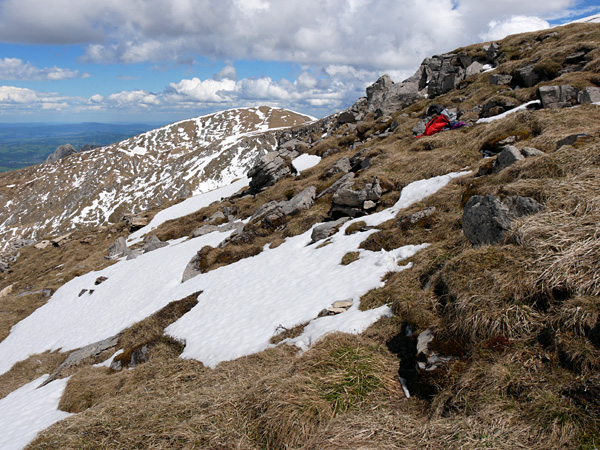MICROCOSMOS: Mountain ecosystems facing global warming: study of impact of snow cover parameters on microbial communities of nivicolous myxomycetes
Summary
Global climate change induces multiple processes on the Earth. One of the most iconic phenomena is the melting of glaciers, reduction of snow amount in the mountains and earlier snowmelt period. Changes in winter snow cover greatly influence high-mountain ecosystems. Here, undersnow and nivicolous communities of organisms, directly dependent on the development and duration of snow cover and related temperature and moisture control, seem to be the most vulnerable group. The consequences of snow masses reduction are increasingly well studied for larger animals and vascular plants, while the impact of climate change processes for microbial communities and their survival capabilities has never been largely studied.
Myxomycetes (plasmodial slime moulds) are a specific group of soil microorganisms that constitute the most numerous part of soil protist communities. Being predators of bacteria, yeasts and other microorganisms, they play an irreplaceable role in balancing soil microbial communities. Myxomycetes undergo a complex life cycle, most of which they spent as amoebae and plasmodium that subsequently transform into a colony of tiny (mostly approx. 1 mm in diam.) sporocarps. Sporocarps that usually occur in large quantities release masses of airborne spores making the myxomycetes a unique group among other protists having great capacities of long-distance dispersal.
One of the most interesting, ecologically defined, groups of myxomycetes is the one that requires winter snow cover to undergo their complete life cycle. These myxomycetes live under snow as amoebae and plasmodia and during the snow melt period, they form sporocarps on the surface, usually in large quantities. Due to their specific place of appearance they are referred to as nivicolous myxomycetes. They occur in all mountain massifs of the World where snow cover is present and melts in springtime. Decrease of snow masses and disturbance in winter precipitation regime caused by global warming tendencies may have dramatic consequences for the stability of populations of nivicolous myxomycetes in their natural environment and in consequence also for the functioning of mountain soil communities. The ecological features of nivicolous myxomycetes together with the formation of macroscopic sporangia (a unique feature of myxomycetes among all protists) make this group an appealing model for investigations of climate change impact on the high-mountain soil microbiome.
The aim of the present project is to study the influence of amount and durability of snow cover on genetic diversity and species richness of nivicolous myxomycetes at two levels:
- Populations completing life cycle (sporocarps);
- Soil amoebae populations.
Using integrative approach by application of methods based on traditional taxonomy (sporocarps morphology) combined with molecular barcoding for assessment of sporocarps and intraspecific diversity of species and metabarcoding of environmental samples to survey populations of soil-dwelling amoebae, and analysis of local climatic variables in situ, at a hitherto unprecedented scale, we will attempt to estimate long-distance dispersal potential of nivicolous myxomycetes, resilience to changes of ecological context and capacity of survival in habitats with unstable snow cover. The spatial system for our study will include two gradients, altitudinal (spanning from optimal high-mountain sites with stable snow cover through lower-mountain sites with less stable snow conditions, to lowland sites characterised by short-lasting and unstable snow cover) and latitudinal, which roughly simulate the increasing impact of climate change in time. In particular, we will try to answer the following questions:
- Does the fructification propensity of nivicolous myxomycetes decrease with decreasing amount of snow and duration of snow cover?
- Do taller and larger mountain massifs have taxonomically and genetically more diverse myxomycete biota than smaller and lower ones?
- Do populations of amoebae in lowland, where fruiting is rare to absent, show signs of genetic depauperation?
Results of the planned project will allow to understand the genetic structure, dynamics and dispersal potential of nivicolous myxomycete populations, estimate the degree of threat of nivicolous myxomycetes caused by processes triggered by global warming and estimate their capacity of inhabiting distant areas and survival in unstable environmental conditions. For selected species, we will model currently available niches and will estimate potential distribution ranges in relation to different climate change scenarios.

Czerwone Wierchy massif (Western Tatra Mts.), one of the study sites of the elevational transect.
Photo: Anna Ronikier.

Diderma alpinum, one of nivicolous myxomycetes.
Photo: Michał Ronikier.





